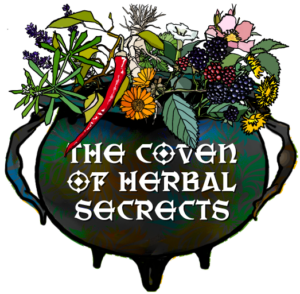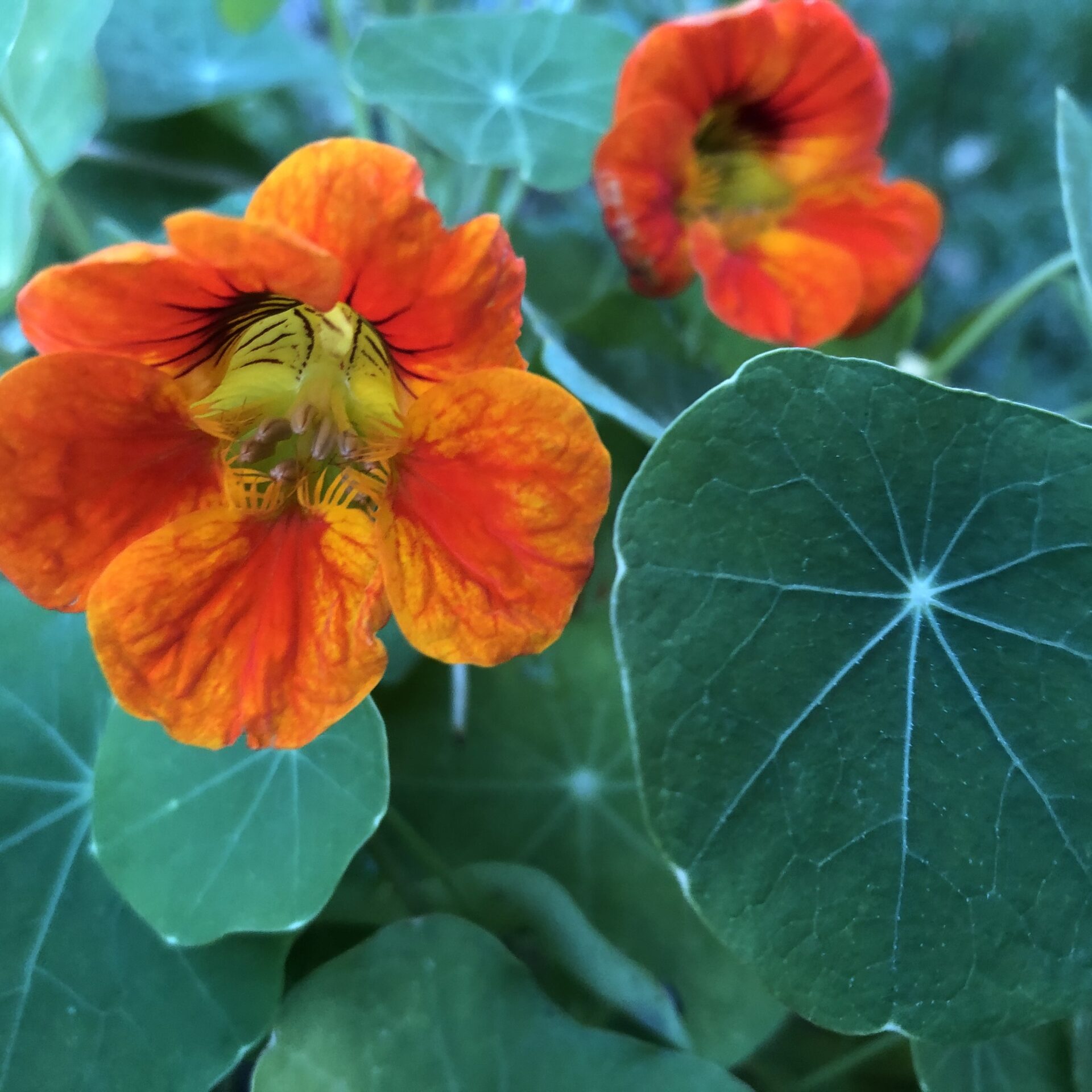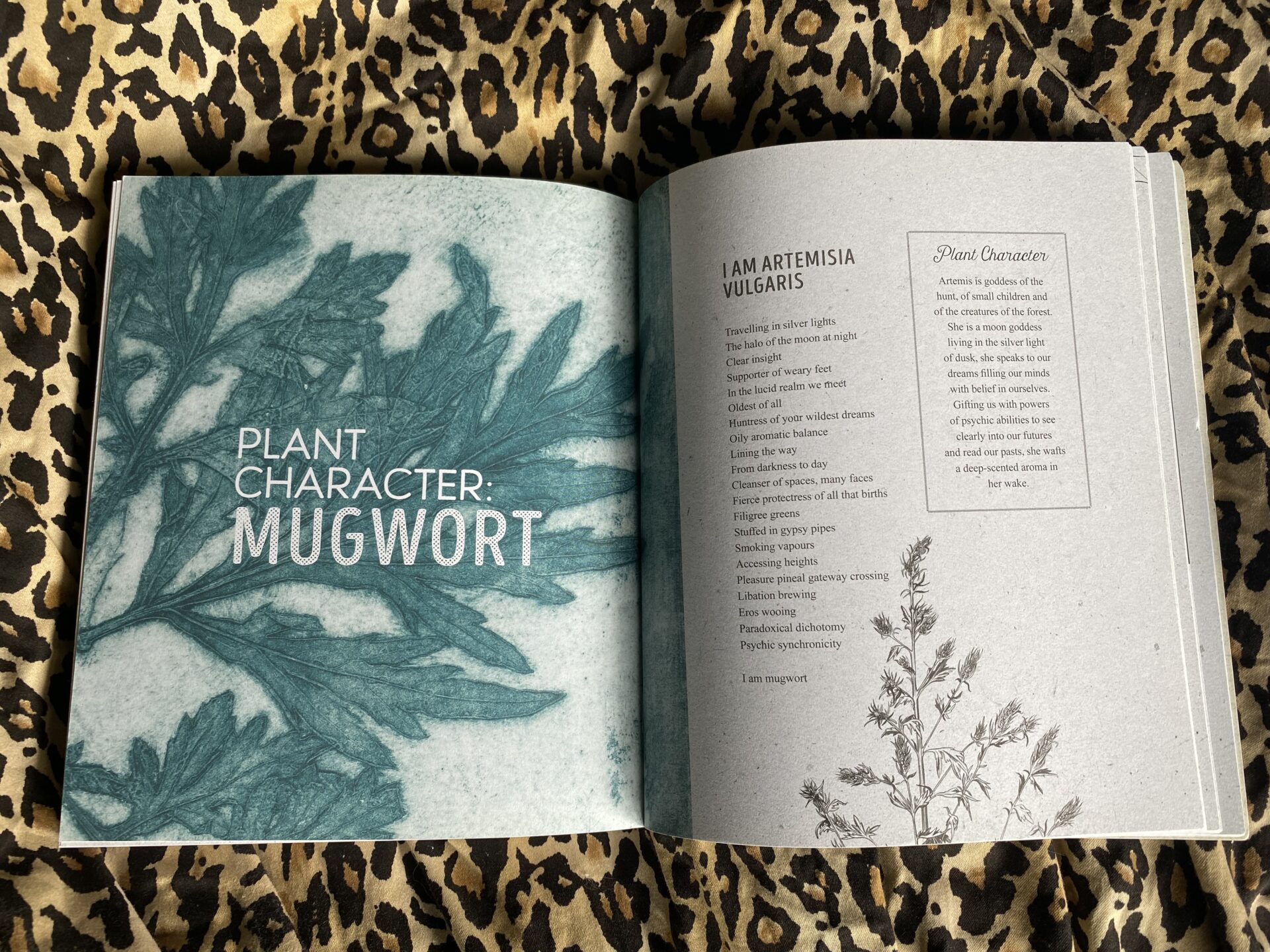What is Circulation?
Our bodies are incredible – a plethora of different actions are taking place every moment, even when we rest and sleep. The circulatory system is the transport system of our bodies. It comprises of arteries, veins and capillaries. A 60,000-mile super highway!
Our amazing beating heart is kind of like the central station, responsible for the initiation of transportation and subsequent delivery of oxygen and nutrients. Each and every cell in our bodies need oxygen and nutrients. Once the oxygen is used up, the deoxygenated blood needs to return back to the heart, and then sent to the lungs to be re-oxygenated. In anatomy and physiology books this is depicted as the blue deoxygenated blood and the red oxygenated blood. Like any road, if it becomes blocked or narrows, traffic can back up or even grind to a halt.
oxygen and nutrients. Each and every cell in our bodies need oxygen and nutrients. Once the oxygen is used up, the deoxygenated blood needs to return back to the heart, and then sent to the lungs to be re-oxygenated. In anatomy and physiology books this is depicted as the blue deoxygenated blood and the red oxygenated blood. Like any road, if it becomes blocked or narrows, traffic can back up or even grind to a halt.
Signs and symptoms of poor circulation
- Cold extremities (hands and feet)
- Low energy
- Poor concentration
- Thinning hair
- Slow healing due to a weakened immune system
- Erectile dysfunction
Some triggers for poor blood circulation
- Smoking
- Lack of exercise
- Poor diet
Our favourite circulatory herbs
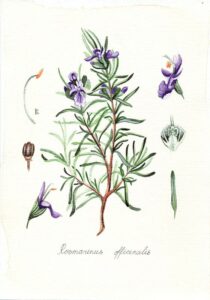 There are many ways that herbs can work with the body to improve circulation but some of our favourites are the ones that get you feeling hot and spicy. Plants that aid to move the blood around the body are often spicy in their flavours. The familiar kitchen herbs chili, ginger, horseradish and rosemary are all warming or heating circulatory stimulants.
There are many ways that herbs can work with the body to improve circulation but some of our favourites are the ones that get you feeling hot and spicy. Plants that aid to move the blood around the body are often spicy in their flavours. The familiar kitchen herbs chili, ginger, horseradish and rosemary are all warming or heating circulatory stimulants.
Then there are herbs that support the heart like the wonderful hawthorn, which increases coronary artery blood flow (that means it improves the flow of blood specifically to the heart, improving and supporting the heart muscle capacity to beat), improves circulation and lowers blood pressure.
Another way that herbs can help with circulation is by actually relaxing the blood vessels. Herbs that have this action include yarrow and valerian – They open up the free flow of blood movement through previously tightened and constricted blood vessels.
Herb focus on horseradish
Horseradish is classified under the domain of the planet Mars. Direct, powerful, immediate.
As the seasons creep towards the start of the freezing winter months, all things warming and spicy are the order of the season. We’ve just been digging up horseradish root with some of our apprentices in preparation for their winter roots weekend of teaching.
Horseradish is a circulatory and stimulating herb, making it one of the best herbs for circulation. It is so hot that when you chop it up, the enzymes release mustard oil into the atmosphere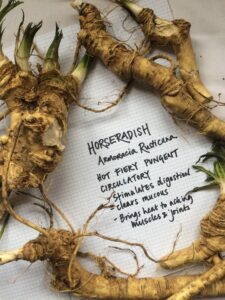 and sting your eyes. We opt for goggles to chop it with, a fun sight for anyone that walks in the kitchen while you work!
and sting your eyes. We opt for goggles to chop it with, a fun sight for anyone that walks in the kitchen while you work!
When you chew a small amount, once the heat has subsided, horseradish has a distinct bitter taste. These bitters are responsible for encouraging the digestion by stimulating the liver and pancreas. That’s why it’s traditionally eaten alongside fatty meat.
It is said that the oracle of Delphi said to Apollo that Horseradish is worth its weight in gold. She was right; it’s a hugely valuable plant both medicinally and as a condiment.
We use it as part of our Ache Ease balm ( a wonderful muscular skeletal rub) to bring circulation to a damaged or inflamed joint or as a rub for tired, achy muscles. It encourages blood flow to the area by warming the skin and underlying tissues. The mustard oils penetrate the skin and into the blood stream.
Horseradish used directly, can be irritating to the skin, so it is best to mix with some other oils. In our Ache Ease Balm we also use comfrey and heather infused oils and rosemary and peppermint essential oils.
How to make Horseradish Oil
Chop it up as thinly and as small as possible soon after harvesting. If you wait too long and it becomes too dry and it is nearly impossible to chop. The last time we made it, we placed the chopped pieces into a brown paper bag and in the airing cupboard for one to three days to get most of the moisture out. If you put the fresh root in the oil still moist, the oil will go rancid as the water content is too high.
Once chopped and at least partially dried, it then goes into a clean jar and covered in oil. Almond oil is our oil of choice but any oil will do. Olive is thicker with more of a district aroma, grape seed very light but you can play around until you find your own personal favourite. As the root starts to mix and absorb the oil, the horseradish releases sulphurous gases that you can see as bubbles rising to the surface of the oil. Every couple of days it’s important to release the lid to let the eggy gases out. After two weeks, you can strain the horseradish out of the oil through a muslin cloth and store your oil to combine with other oils of your choice.
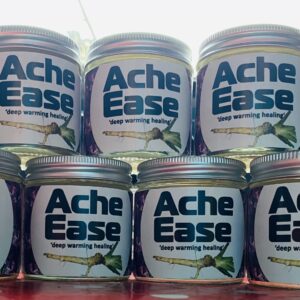 ACHE EASE BALM
ACHE EASE BALM
The horseradish oil in our ache ease balm brings heat to the injury and increases circulation so that fresh blood is brought to the area and healing is sped up. In combination with the anti-inflammatory properties of heather and the tissue restorative qualities of comfrey, our horseradish balm has relieved hundreds of people of their aches and pains over the years. We recommend this rub for bruises, breaks, stiff muscles and aching joints including inflammatory conditions like arthritis. One of our clients recently reported running their first pain-free marathon having rubbed Ache Ease into their knees and ankles.


